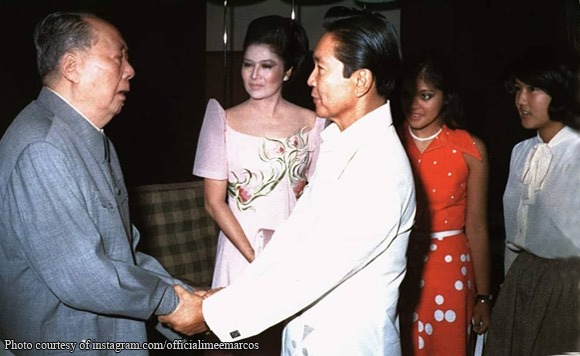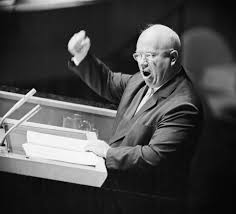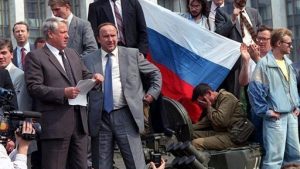JOMA SISON & HIS WRONG ‘HISTORICAL ANALYSIS’
Special Report on the Second Congress of the CPP (Part 4)/Pinoy Exposé Team

Editor’s Note:
In the first three preceding series of this special report, we discussed how the CPP has managed to falsify, gloss over and twist historical facts in order to first, allow its founder, Jose Maria Sison, to further consolidate his control of the local armed communist movement, thus putting the lie to his and the CPP’s claim that he is now just a “political consultant” in the peace talks with the government.
At this point, we now focus discussion on the erroneous “interpretations” by the CPP of world events that it is using in turn as basis in analyzing the local situation and which in turn, is its main argument in pursuit of its armed struggle.
As previously stated, this series is based on CPP documents, its amended Constitution and revised ‘Program’ that were among those recovered by government forces in Baguio City last March 13, 2020, from Julius ‘Ka Nars’ Giron. He and two of his companions were killed after they allegedly resisted the serving of an arrest warrant against him.
The government also allegedly seized “documents of high intelligence value” that include the list of businesses silently paying off the CPP over the years.
Giron was the elected CPP chairman during the Second Congress of the CPP held from October 24 to November 7, 2016, in the hinterlands of Surigao del Sur.
COMMUNIST Party of the Philippines founder, Jose Maria Sison, for all his eruditeness as a writer and his alleged “solid grounding” on Marxism, had grievously “misread” the development of world events.
And having erred, his and the CPP’s “analysis” of the local situation is therefore false, thus dooming their armed struggle.
In other words, his errors undercut the “theoretical foundations” of his arguments and thus negated everything else that followed.
Sison’s first major blunder was his failure to anticipate that after Mao Zedong’s China agreed to give the New People’s Army (NPA) material support in the early 1970s, China’s ‘Great Helmsman’ would turn around and dumped the CPP– despite its avowed dedication to “Maoism”– in favor of a diplomatic relationship with the Philippine government in 1975.
This is China’s version of its ‘peaceful coexistence’ policy, a policy of the Soviet Union that Mao had been stridently denouncing since 1956 as “Marxist revisionism.”
The USSR’s ‘peaceful coexistence’ stand in its dealings with the West is among the reasons behind the ‘Sino-Soviet Split’ by 1960 that eventually led to their border war in 1969.
With the death of Chairman Mao in 1975, just several months after opening formal diplomatic relationship with the Philippines, the CPP must have been aghast that under Deng Xiaoping, the Communist Party of China (CPC) would, in 1978, adopt the same peaceful coexistence policy of the Soviet Union that it once ridiculed and denounced as “Marxist revisionism” under Mao.

Under Deng, China formulated its ‘Socialism with Specific Chinese Characteristics’ that abandoned its support for “wars of national liberation” in Third World countries in favor of economic development and attending to its more pressing domestic problems.
Aside from embracing such “Marxist heresy” that turned the CPP’s Maoism on its head, the CPP’s hope of further Chinese material support was gone.
And no thanks to the CPP’s parroting of China’s rabid “Anti-Sovietism” under Mao, it found itself a “pariah” from the only other socialist power that can help it, the Soviet Union.
Not that the CPP can hope to get the attention of the Kremlin after being shunned by China. The USSR, after all, is supporting the old Partido Komunista ng Pilipinas (PKP).
And the PKP, for its part, had already decided as early as 1964 (after the arrest of Jesus Lava) to discard its armed struggle (the ‘Huk Rebellion) in favor of a “peaceful” (parliamentary) way to effect social reforms.
It is also an indication of Sison and the CPP’s theoretical bankruptcy that for more than 100 years now, they continue to see the “ever worsening crisis of the world capitalist system,” mainly due to the world’s great powers’ “struggle for the redivision of the world.”
“The contradictions of the capitalist powers, that the CPP said now include China and Russia, “are sharpening in a crisis-stricken, stagnant and increasingly depressed capitalist world.”
The above “world view” was first formulated by Vladimir Lenin, founder of the Soviet Union, in 1916 or more than 104 years ago.
At the time, Lenin may have got his analysis right, thus helping him succeed in overthrowing ‘Tsarism’ in 1917, the year his work, ‘Imperialism, the Highest Stage of Capitalism’ was published.
But to insist, more than 100 years later, that the international situation is still beset by the “intense rivalry” among capitalist states for the “division and re-division of the world” is ridiculous.
If after World War II, the world was divided into the “capitalist camp” and the “socialist camp,” between US Imperialism and the Soviet Union, the ugly truth is that, after 1991, the year the USSR was dissolved, only one superpower was left on the scene: The United States.

And no country, China and Russia included, are challenging the global military supremacy of Uncle Sam.
While it is true that US Imperialism is now on the decline, to equate this to the crisis of world capitalism or that this was due to the “struggle” of other capitalist states for the “re-division” of the world, as the CPP sees it, is nonsense. For after World War 2, there is no more part of the world to “divide.”
Especially too in this age of the atomic weapon, it is likewise nonsense for the CPP to believe that the next global conflict would merely use conventional military forces that would give any insurgency the opportunity to grab power while nations are kept busy defending their borders or sending their militaries to far-off places in support of any military adventurism.
The frightening possibility is that, the next global conflict could well result to the annihilation of the entire human race (end of part four).


